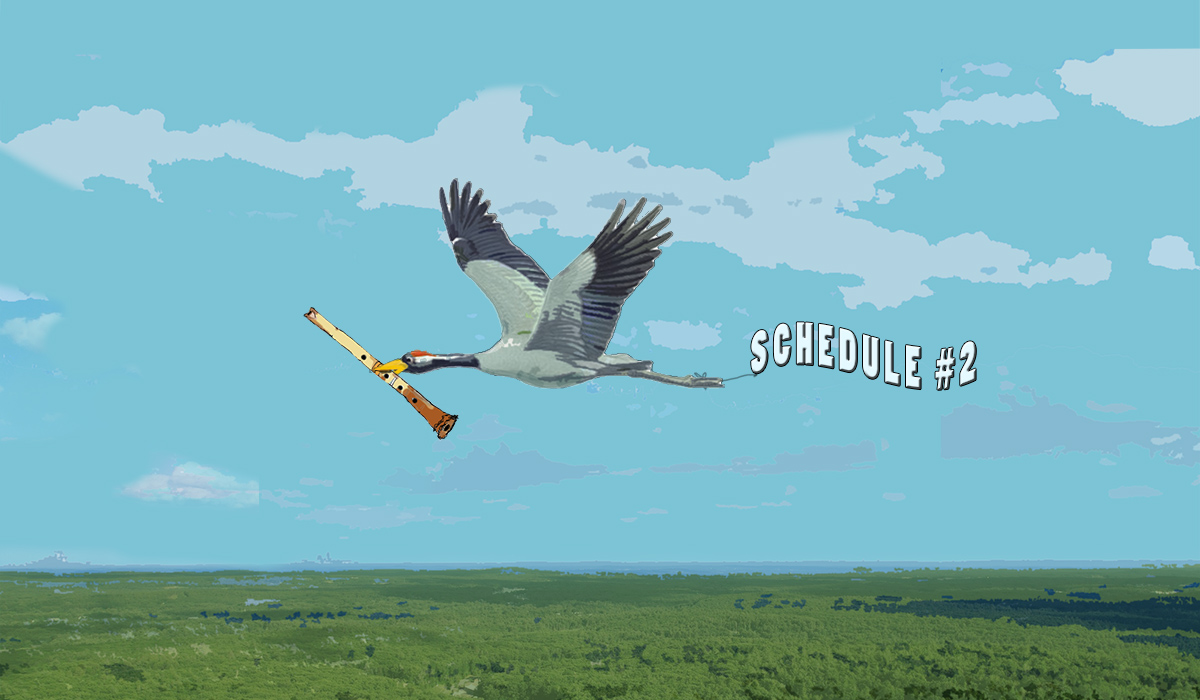SCHEDULE & CONTENT
EVENT #2 11/12 NOVEMBER 2023
BEGINNERS/ELEMENTARY
SATURDAY 11 NOVEMBER 2023
| Session 1.1 | 09h30 – 10h00 | Daniel Ryudo – ro-buki/technique tip |
| Session 1.2 | 10h05 – 11h35 | Daniel Ryudo – Hifumi Hachigaeshi & Kyushu Reibo (Myōan) |
| Session 1.3 | 11h45 – 13h00 | Daniel Ryudo – Sanya Sugagaki (Kinko-ryū) |
| BREAK | ||
| Session 1.4 | 14h00 — 15h00 | Véronique Piron – Hietsuki Bushi (min’yō) |
| Session 1.5 | 15h10 — 16h25 | Véronique Piron – Otachizake (min’yō) |
SUNDAY 12 NOVEMBER 2023
| Session 2.1 | 09h30 – 10h00 | Riley Lee – ro-buki & tips |
| Session 2.2 | 10h05 – 11h20 | Riley Lee – How to memorise honkyoku |
| Session 2.3 | 11h30 – 13h00 | Riley Lee – continuation: Put it to the Test! |
| BREAK | ||
| Session 2.4 | 14h00 — 15h15 | Elizabeth Reian Bennett – Honte Jyoshi & Matsukaze no shirabe (Myōan) |
| Session 2.5 | 15h25 — 16h25 | Elizabeth Reian Bennett – Banshikijo (Reibo-kai) |
About the schedule/programme
SATURDAY 11 NOV:
Hifumi-Hachigaeshi literally means ‘one, two, three… return the bowl’ with the Hifumi-cho section being a kind of warming up and settling into the proper frame of mind for playing honkyoku, and the Hachigaeshi (‘return the bowl’) referring to the komuso monks receiving rice when begging and then playing a shakuhachi piece in gratitude. In the Myoan school, the two pieces also have a Taoist emphasis, with Hifumi-cho being considered ‘in’ or yin and Hachigaeshi being ‘yo’ or yang.
Kyushu Reibo – The title Reibo can be translated as ‘yearning for or following the bell’ and this is in reference to the 9th Chinese Zen monk Fuke, who is said to have rung a handbell which his disciple wished to imitate with a bamboo flute; there are many pieces titled Reibo or Reiho from various parts of Japan, and this one comes from Kyushu island.
Sanya Sugagaki – Sugagaki pieces are honkyoku with a specific repetitive rhythm, unlike the majority of free rhythm honkyoku, with Sanya meaning ‘three valleys’ and Sugagaki originally referring to instrumental koto pieces or ancient koto pieces played in a Shinto context
Hietsuki Bushi (ひえつき節) “Barnyard grass pounding” min’yō tune from Miyazaki prefecture, Kyûshû island, originated in the Shiiba village area (Higashi-usuki-gun). This song is with shamisen (rhythm), the shakuhachi uses RO-TSU-RE pitches
Otachizake (お立ち酒) Blissful min’yō song from Miyagi prefecture. There is no shamisen (shamisen nashi = free rhythm) and the shakuhachi uses some meri pitches.
SUNDAY 12 NOV:
How to do ro-buki; why it’s a good habit to develop and suggestions that may maximise its benefit.
How to memorise anything, in this case, a honkyoku (which honkyoku to be revealed)
Continuation: Put it to the Test!
Honte Jyoshi (Song of the True Hand) & Matsukaze no shirabe (Pine Wind) – Elizabeth Reian teacher (Aoki Reibo) played a group of Myoan pieces, among them these. She also included a copy of the old Myoan score (called Choshi) upon which Honte is based in the study materials.
Special thanks to Ralph Sammuelson for sharing the old score of Choshi, Ralph also gave us information on Banshikijo, below.
Banshikijo – The title, Banshikijo, is a gagaku mode associated with late autumn. It is appropriate to play it before Shika no tone (Distant Call of Deer), for that reason. It is also played before the Kinko-ryū Shin Kyorei, as parts of it are similar to the earlier Kyorei.
